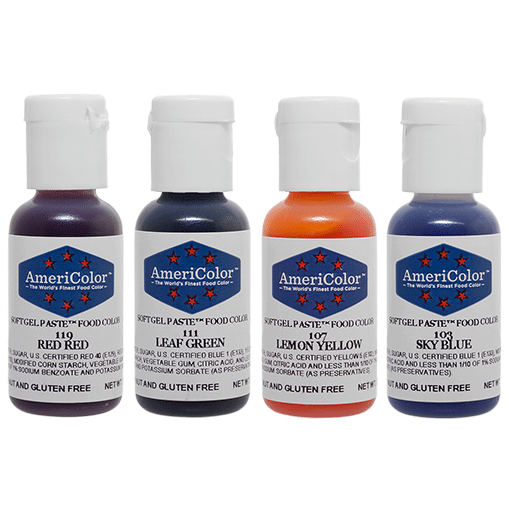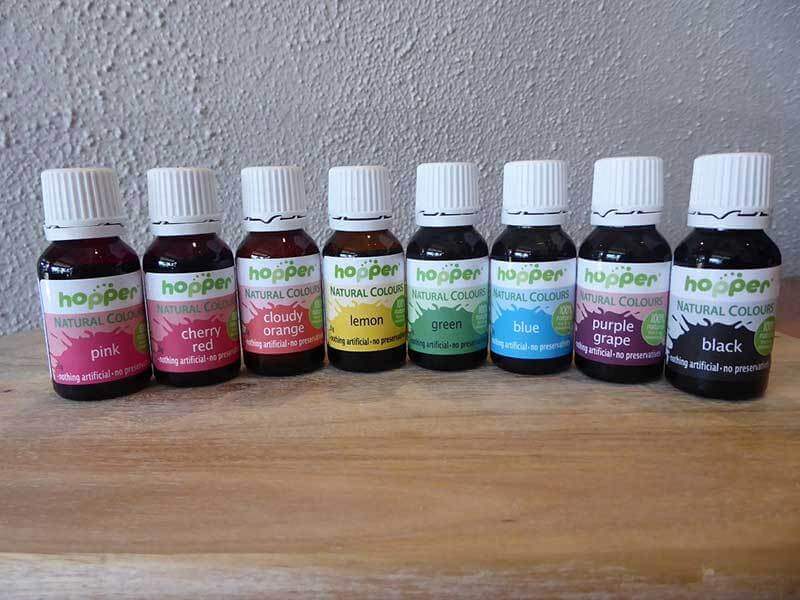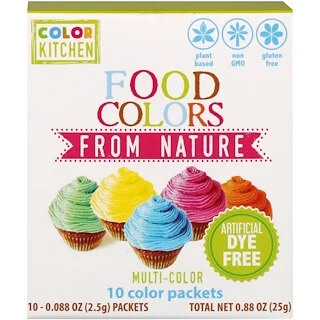Is food coloring gluten free? If you have celiac or suffer from gluten intolerance, you need to be aware that not all food colorings are gluten free. Most are, but not all.
In this article we will go over the popular gluten free food coloring brands and provide much needed information on the topic.
Gluten free confidence score of food coloring

People have been using natural dyes for centuries to color food and drinks and make them more appealing. There is no doubt that eating means much more than just taste.
The reason manufactures started using colors in food is because eating is a sensory experience that involves all our senses:
- Taste
- Feel
- Sound
- Smell
- Sight
But things have changed a little since the Roman Times. Even though nature provides us with an extensive hue of colors we can use to color food (turmeric, Chlorophyll, carotenoids, etc.).
The use of synthetic colorings comes with a series of advantages that the modern man simply can’t overlook: reduced production costs, longer shelf-life, and extensive variety of colors.
What is food coloring

Adding colorants to food dates as far as 1,500 B.C. when Egyptian candy makers started to add natural extracts to their products to make them more appealing.
Initially, artificial food colorings were manufactured from coal tar. However, nowadays, synthetic food dyes are mostly derived from petroleum and undergo rigorous testing to ensure they don’t contain traces of the original petroleum.
Artificial colorings are currently available in many forms ( pastes, liquids, gels, powders ) and are widely used in domestic cooking, commercial food production, and non-food industries ( pharmaceutics, cosmetics, medicine, etc. )
In the U.S, there are seven artificial colors that have been approved for food usage:
| FD&C Blue No. 1 Brilliant Blue | FD&C Red No. 3 Erythrosine |
| FD&C Blue No. 2 Indigotine | FD&C Yellow No. 5 Tartrazine |
| FD&C Green No. 3 Fast Green | FD&C Yellow No. 6 Sunset Yellow |
| FD&C Red No. 40 Allura Red |
Why are food colorings so widely used?
Well, eating should be a full sensory experience. And that implies sight. Food coloring is used to enhance natural colors, correct natural color variations, and make colorless foods more appealing and fun to eat.
What’s more, manufacturers use food coloring to help consumers identify their products immediately and thus enhance brand awareness. Just think of candies or ice creams!
Known gluten free brands of food dye
Of course, if you want to make sure your food coloring is gluten free, you can opt for homemade alternatives. There are plenty of available online tutorials. However, if you want to purchase your food colorings, there are certain brands you can safely consume.
AmeriColor

All food colorings produced by AmeriColor are gluten free. What’s more, they are also free of peanuts, tree nuts, and animal products. Here you can find all the important allergens-related information.
This product is not only gluten free, but also Kosher Certified.
McCormick

According to McCormick’s allergens statement, all their food colorings and extracts are gluten free. However, the manufacturer encourages consumers to always check the ingredients statements printed on the packaging. Their compromise is to never hide ingredients on their products’ labels.
Hopper

Hopper produces natural food colors made from fruits, berries, or vegetables. Their products are not only gluten free but also free from egg, dairy, soy, nuts, sulfites, preservatives, and artificial flavors and colors.
If you want to find out more about their products, make sure to visit their website.
ColorKitchen

ColorKitchen produces a wide range of products, all of them naturally sourced, gluten free, vegan, non-GMO, soy-free, and artificial dye-free.
Check out their official webpage for products and fun recipes.
What to look out for
Though dyes are naturally gluten free, cross-contamination may occur during manufacturing. Most food manufacturing plants process different products.
And some of them may contain gluten. For instance, a factory that makes dyes could also produce sauces or seasonings that contain gluten.
Cross-contamination is almost guaranteed if the factory uses the same machinery to process gluten free and gluten-containing products or gluten-containing grains that are stored on the processing plant.
However, there are manufacturers who take rigorous precautions to guarantee their dyes are really gluten free: use of gluten-free machinery, testing the final products for gluten, or not storing gluten-containing grains on the same plant dyes are produced.
Then how can celiac and gluten-sensitive consumers play safe? Try to opt for food colorings that are clearly labelled as gluten-free.
To sum up
Eating goes well beyond taste. It involves all our senses, including sight. It is impossible not to watch what you are eating, isn’t it?
An appealing appearance helps people fully appreciate what they are eating. Though food colorings do not directly contain gluten, cross-contamination may occur during manufacturing.
So, if you have celiac or suffer from gluten-intolerance, the best solution is to make your own food colorings or opt for gluten free labeled commercial alternatives.